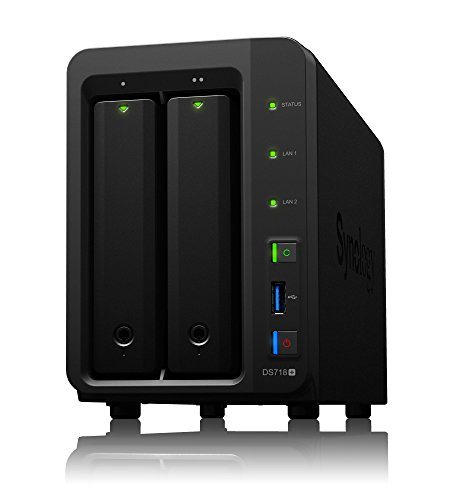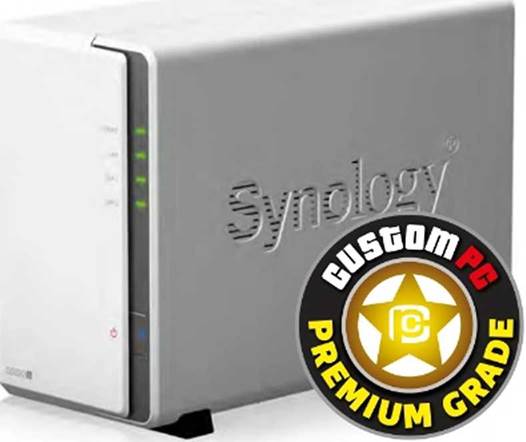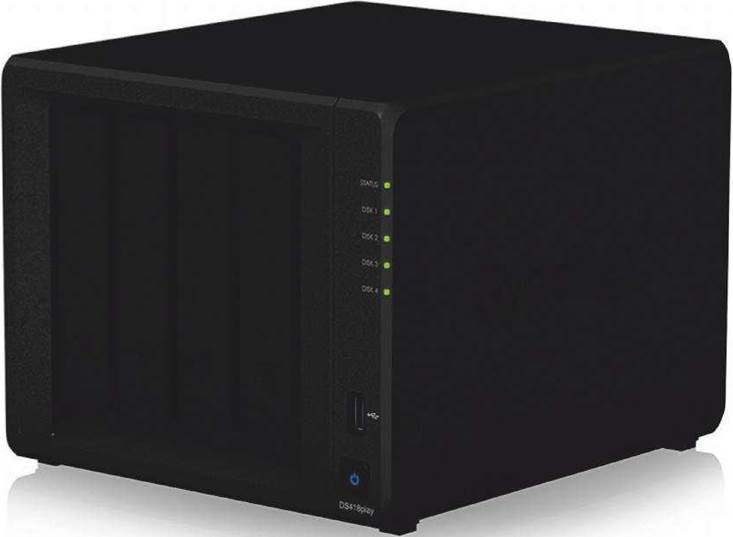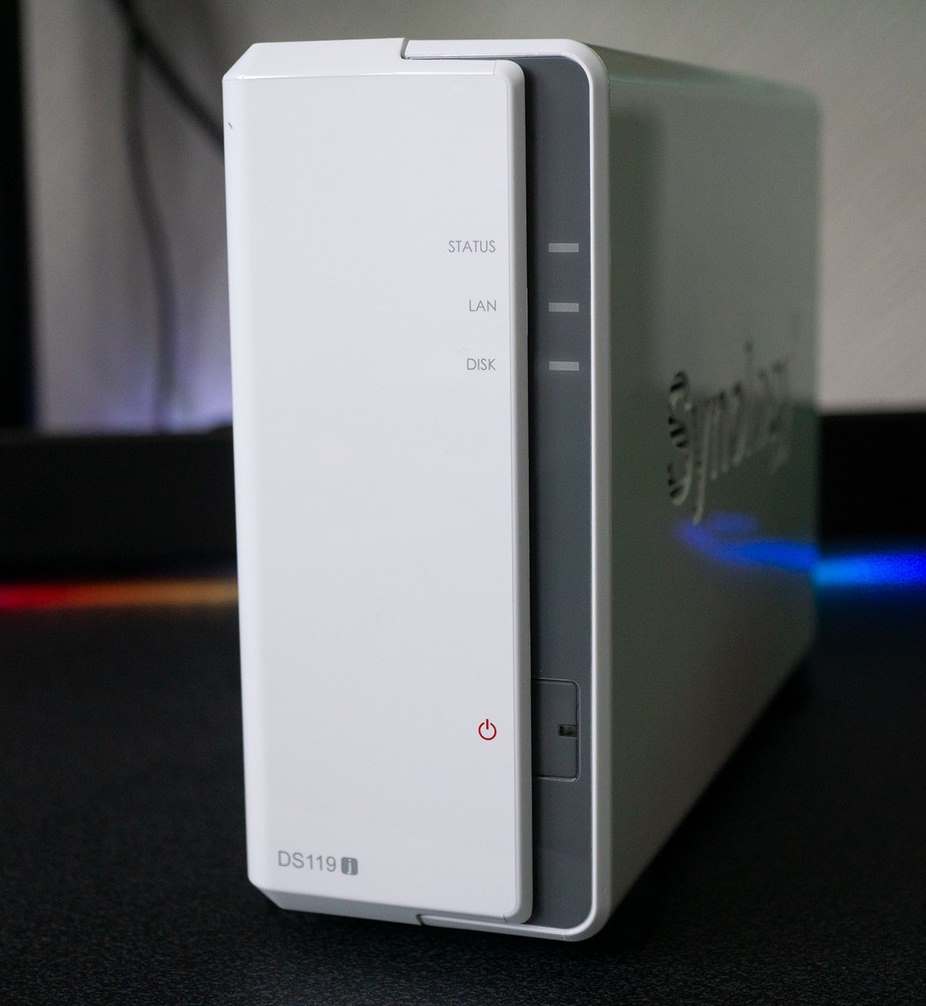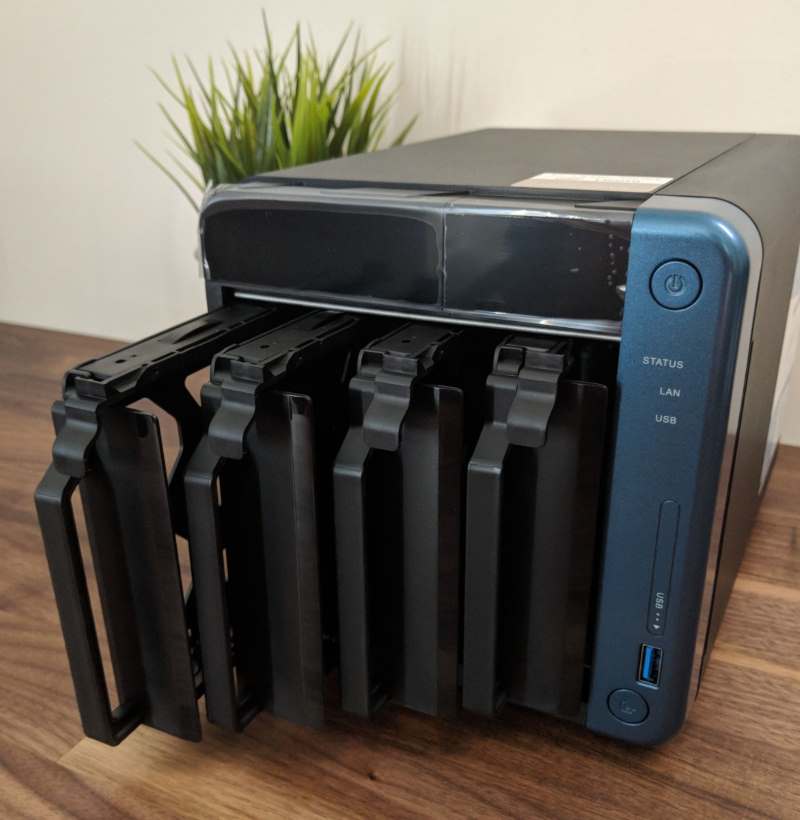SYNOLOGY DS718+ Review – Synology’s DS718+ is the latest update to the popular Plus Series of DiskStation NAS units. This 2-bay model is an upgrade from the DS716+II, featuring a new CPU – and that’s about it really. Not that this is a bad thing, the DS716+II is a great unit in the first place, there’s just not much new besides a slightly faster CPU.
From the outside, the DS718+ looks identical to the DS716+II it’s replacing. Two gigabit LAN ports, a USB 3.0 port on the front and two more on the rear, together with an eSATA port. On the inside, there’s still 2GB of RAM but the CPU is now an Intel Celeron J3455 quad-core 1.5GHz chip that can burst up to 2.3GHz. Not a huge upgrade from the DS716+II’s N3160, but Synology did give the DS718+ an SO-DIMM RAM slot, allowing an upgrade from 2GB to 6GB of RAM.
Synology claims, that the DS718+ can deliver up to 226 MB/s read and 188 MB/s write speeds in a RAID 1 configuration if LAN link aggregation is used. Due to hardware encryption support, that sort of speed can be maintained even with encrypted data. In a quick test with 2x 6TB Western Digital Red HDDs in RAID-1 there were no problems at all saturating a gigabit LAN connection on the DS718+, with sequential reads and writes.
Where the DS718+ and indeed, all Synology NAS units shine, is the DiskStation Manager (DSM) software. DSM is the operating system Synology has been crafting for years to run on its NAS units and is better than ever. This isn’t a review of the DSM as such, but the latest version (DSM 6.1) has some great new features.
Top of that list is the BTRFS file system. BTRFS can auto-detect corrupted files with mirrored metadata and recover broken data automatically. BTRFS also brings incredibly useful snapshots, allowing point-in-time and instant copies of an entire shared folder, making backups a breeze.
Other features in DSM 6.1 that the DS718+ can take advantage of include shared folder encryption and USB key storage, much improved Time Machine support for Mac users and Seagate’s IronWolf Health Management software is built in if you have a compatible drive. There are literally hundreds of software packages available from 3rd parties that turn any Synology NAS into a full-blown server that can become the hub of your digital home or office. Synology’s website has more info on this if you’d like to get a full list of apps.
One of the most popular apps is Plex and because the DS718+ is an Intel CPU based NAS, that
Where it shines is with the DiskStation Manager (DSM) software
means it’ll run quite well. If you’re already a Plex Server user, you’ll know that a beefy CPU is required to handle transcoding of multiple steams, particularly if streaming video outside the home or to devices that don’t support native playback of the video format in play. The Intel J3455 CPU in the DS718+ is no speed demon, but it will handle one, maybe two (depending on the source format) 1080p streams simultaneously with Plex.
To take advantage of Synology’s advertised “1-channel H.264/H.265 4K Ultra HD or 3-channel Full HD video transcoding”, you need to use Synology’s DS Video app, which is fine, but it’s just not as polished as Plex. It would be fantastic if Synology did what Western Digital has done and helped Plex incorporate hardware transcoding support for its devices.
The Synology DS718+ NAS is pricier than most 2-bay NAS units, and if all you require is something basic to store backups on, you can save money by getting a cheaper ARM-based unit that’ll also use less electricity. But, if you use your NAS as a home server rather than a simple file storage device, Synology’s continued improvement of DiskStation Manager and the new Intel J3455 CPU in the DS718+ are a brilliant combination.
ANTHONY AGIUS

When you purchase through links on our site, I may earn an affiliate commission. Here’s how it works.
KEY SPECS
2x SATA 3 2.5in/3.5in drive bays • Intel Celeron J3455 quad-core 1.5GHz CPU • 2GB DDR3 RAM • 3x USB 3.0 • 1x eSATA • 2x Gigabit Ethernet
